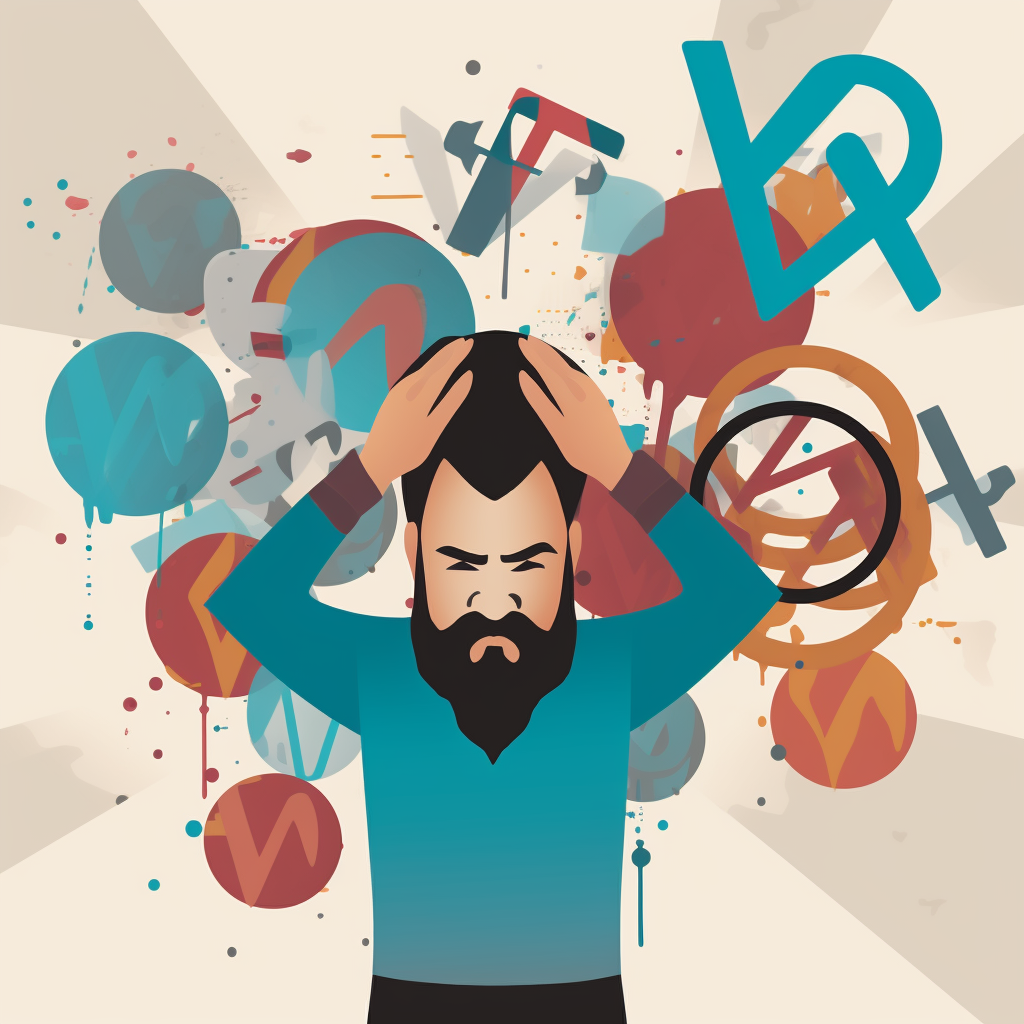The WordPress White Screen of Death (WSOD) is a frustrating issue that occurs when your WordPress site displays a blank white screen instead of the expected content. There can be multiple reasons behind this error, but here are the top five most common causes:
Plugin or theme conflict
Conflicts between plugins or between a plugin and the active theme are a common cause of the WSOD. This can happen when two or more plugins have incompatible code or when a plugin conflicts with the theme’s functionality. To resolve this, deactivate all plugins and switch to a default WordPress theme like Twenty Twenty-One. Then, reactivate plugins and switch back to your desired theme one by one to identify the conflicting plugin or theme.
PHP errors
PHP errors within your WordPress installation can lead to a white screen. This can happen due to a syntax error, a missing file, or incompatible code within a plugin, theme, or even the WordPress core files. Enabling PHP error reporting in the wp-config.php file can help identify the specific error causing the white screen. Once identified, you can address the issue by fixing the code or seeking assistance from a developer.
Exhausted memory limit
WordPress relies on memory resources to execute various operations. If your site’s memory limit is set too low or is exhausted due to resource-intensive plugins or themes, it can result in the white screen issue. To resolve this, you can increase the memory limit by modifying the wp-config.php file or contacting your hosting provider for assistance.
Corrupted or incomplete file uploads
Sometimes, incomplete or corrupted file uploads during WordPress updates or installations can trigger the white screen. This can happen if files are not properly transferred or if there are file permission issues. To address this, you can manually reinstall the WordPress core files by downloading a fresh copy from WordPress.org and replacing the existing files on your server.
Server-related issues
Issues on the server-side can also cause the WSOD. It could be due to server misconfigurations, inadequate server resources, or problems with the web hosting environment. In such cases, contacting your hosting provider’s support team and providing them with details about the issue can help diagnose and resolve the problem.
Troubleshooting tips:
When troubleshooting the WordPress White Screen of Death (WSOD), it’s important to take a systematic approach to identify and resolve the issue effectively. Here are the steps you can follow:
Enable Debugging Mode: First, enable WordPress debugging mode by adding the following code to your wp-config.php file:
- define(‘WP_DEBUG’, true);
- define(‘WP_DEBUG_LOG’, true);
- define(‘WP_DEBUG_DISPLAY’, false);
Enabling debugging mode helps display PHP error messages, which can provide valuable information about the cause of the white screen. Remember to disable debugging mode once the issue is resolved to avoid displaying error messages to your website visitors.
Check for Plugin or Theme Conflicts: Start by deactivating all plugins and switching to a default WordPress theme, such as Twenty Twenty-One. If the white screen issue is resolved, it indicates that a plugin or the active theme was causing the conflict. Now, reactivate the plugins one by one and switch back to your desired theme until the white screen reappears. This will help you identify the conflicting plugin or theme.
Verify File Permissions and Integrity: Ensure that file and folder permissions are correctly set on your server. Typically, folders should have a permission setting of 755, and files should have 644. Incorrect permissions can prevent WordPress from accessing necessary files, leading to the white screen issue.
Additionally, check for any missing or corrupted files. Manually re-upload the WordPress core files by downloading a fresh copy from WordPress.org and replacing the existing files on your server. This will ensure that all essential files are intact and not causing the white screen.
Increase Memory Limit: Exhausted memory limit can be a reason for the white screen. To increase the memory limit, access the wp-config.php file and add the following line before the “That’s all, stop editing!” comment:
- define(‘WP_MEMORY_LIMIT’, ‘256M’);
Adjust the memory limit value according to your requirements. This step is particularly useful if you have resource-intensive plugins or themes that require more memory to function properly.
Consult Hosting Provider: If the above steps don’t resolve the issue, it’s possible that the problem lies with your hosting environment. Reach out to your hosting provider’s support team and provide them with detailed information about the issue, including any error messages you encountered, the steps you’ve taken so far, and the plugins or themes you have installed. They can investigate server-related issues and provide specific guidance or solutions to fix the white screen.
By following these steps systematically, you can narrow down the possible causes of the white screen and increase the chances of resolving the issue successfully. Remember to document the steps you take and any changes you make to assist in troubleshooting and to revert changes if necessary.



